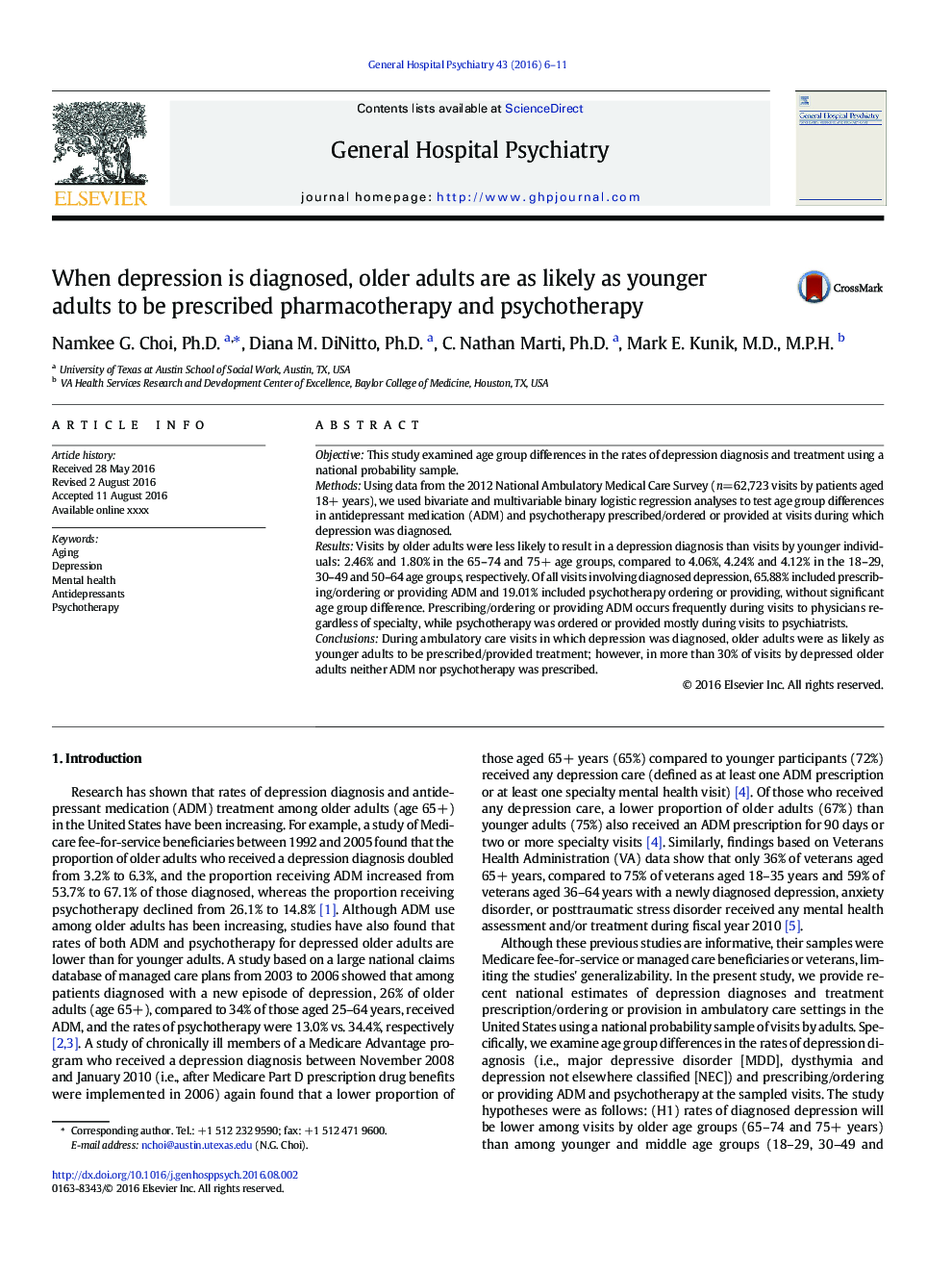| Article ID | Journal | Published Year | Pages | File Type |
|---|---|---|---|---|
| 3237518 | General Hospital Psychiatry | 2016 | 6 Pages |
ObjectiveThis study examined age group differences in the rates of depression diagnosis and treatment using a national probability sample.MethodsUsing data from the 2012 National Ambulatory Medical Care Survey (n=62,723 visits by patients aged 18+ years), we used bivariate and multivariable binary logistic regression analyses to test age group differences in antidepressant medication (ADM) and psychotherapy prescribed/ordered or provided at visits during which depression was diagnosed.ResultsVisits by older adults were less likely to result in a depression diagnosis than visits by younger individuals: 2.46% and 1.80% in the 65–74 and 75+ age groups, compared to 4.06%, 4.24% and 4.12% in the 18–29, 30–49 and 50–64 age groups, respectively. Of all visits involving diagnosed depression, 65.88% included prescribing/ordering or providing ADM and 19.01% included psychotherapy ordering or providing, without significant age group difference. Prescribing/ordering or providing ADM occurs frequently during visits to physicians regardless of specialty, while psychotherapy was ordered or provided mostly during visits to psychiatrists.ConclusionsDuring ambulatory care visits in which depression was diagnosed, older adults were as likely as younger adults to be prescribed/provided treatment; however, in more than 30% of visits by depressed older adults neither ADM nor psychotherapy was prescribed.
